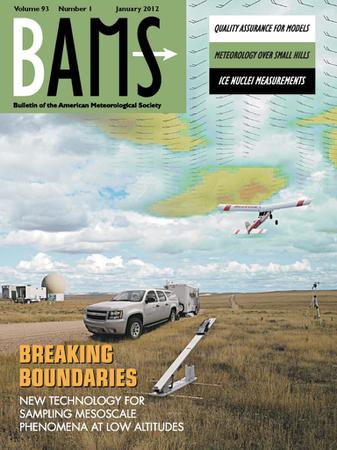NOAA’s Air Resources Laboratory — 75 Years of Research Linking Earth and Sky: A Historical Perspective.
IF 6.9
1区 地球科学
Q1 METEOROLOGY & ATMOSPHERIC SCIENCES
引用次数: 0
Abstract
Abstract For over 75 years, the National Oceanic and Atmospheric Administration’s Air Resources Laboratory (NOAA ARL) has been at the forefront of federal meteorological and climate research. As the Special Projects Section (SPS) of the U. S. Weather Bureau (USWB), the laboratory pioneered the development of atmospheric trajectory modeling, initially used in studies related to nuclear weapons following World War II. Model development was guided by observations following weapons tests, assisted by later experiments using a wide variety of atmospheric tracers. Today’s familiar Gaussian plume dispersion model, previously in nascent form, was developed and promoted with ARL research, as was the much later and widely-used HYSPLIT model. Much of ARL’s early research was focused on the challenges presented by the complex terrain surrounding nuclear installations, often addressed with high spatial resolution meteorological measurements, atmospheric tracers, and site-specific models. ARL has since extended boundary layer research to increasingly complex landscapes, such as forests, agricultural lands, and urban areas, and has expanded its research scope to air quality, weather, and climate applications based on the knowledge and experience developed throughout its long history. Examples of these research endeavors include the establishment of the US Climate Reference Network, fundamental contributions to the development of the National Air Quality Forecast Capability, and foundational participation in the National Atmospheric Deposition Program. ARL looks forward to continuing to refine scientific understanding from field experiments, including coupling ground-based experimentation with modeling, and sustained observations, in order to facilitate the transfer of knowledge into practical applications of societal relevance.美国国家海洋和大气管理局的空气资源实验室- 75年的研究连接地球和天空:一个历史的视角。
75年来,美国国家海洋和大气管理局空气资源实验室(NOAA ARL)一直走在联邦气象和气候研究的前沿。作为美国气象局(USWB)的特别项目部(SPS),该实验室率先开发了大气轨迹建模,最初用于第二次世界大战后与核武器有关的研究。模型的发展以武器试验后的观察为指导,并辅以后来使用各种大气示踪剂的实验。今天我们所熟悉的高斯羽散模型是在ARL的研究下发展和推广的,同样发展和推广的还有后来被广泛使用的HYSPLIT模型。ARL的大部分早期研究都集中在核设施周围复杂地形所带来的挑战上,通常采用高空间分辨率气象测量、大气示踪剂和特定地点模型来解决。此后,ARL将边界层研究扩展到越来越复杂的景观,如森林、农业用地和城市地区,并根据其悠久历史中发展起来的知识和经验,将其研究范围扩展到空气质量、天气和气候应用。这些研究努力的例子包括建立美国气候参考网络,为发展国家空气质量预报能力作出根本性贡献,以及在基础上参与国家大气沉积计划。ARL期待着继续从实地实验中完善科学理解,包括将地面实验与建模和持续观察相结合,以促进知识转化为与社会相关的实际应用。
本文章由计算机程序翻译,如有差异,请以英文原文为准。
求助全文
约1分钟内获得全文
求助全文
来源期刊
CiteScore
9.80
自引率
6.20%
发文量
231
审稿时长
6-12 weeks
期刊介绍:
The Bulletin of the American Meteorological Society (BAMS) is the flagship magazine of AMS and publishes articles of interest and significance for the weather, water, and climate community as well as news, editorials, and reviews for AMS members.

 求助内容:
求助内容: 应助结果提醒方式:
应助结果提醒方式:


